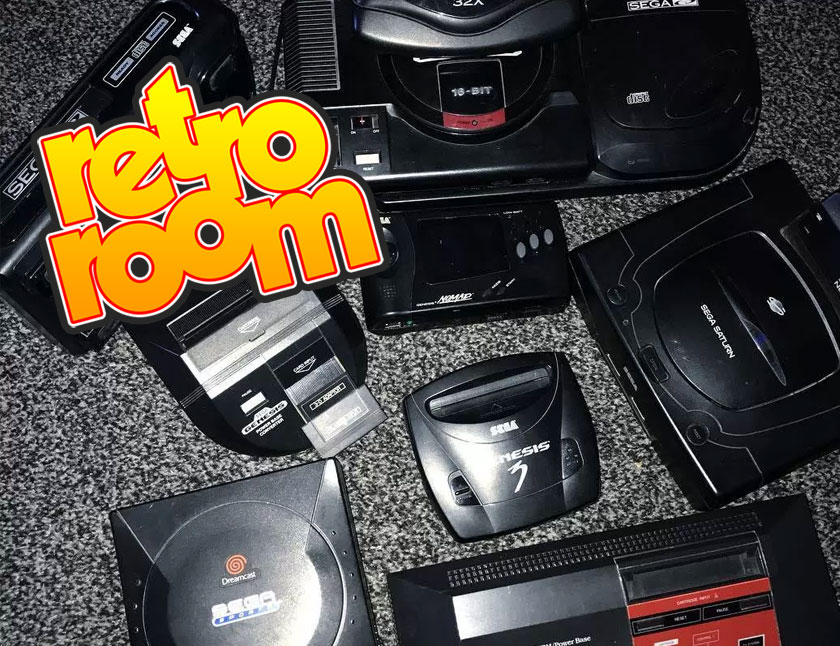
Following the non-consumer friendly avalanche of expansions Sega threw at store shelves during the Genesis era, they settled down and became much more reserved in their hardware lines. This guide will discuss the Saturn through the end of Sega's hardware releases.
Sega Saturn

The Saturn was Sega's follow-up to the massively successful Genesis, though the flood of expansions for the Genesis and Sony's impressive, cheaper and more 3D capable Playstation doomed the Saturn from the start. Not only was Sega losing momentum, but they botched the North American launch of the console, essentially making the launch a surprise that nobody (including retailers) was prepared for.
There was only one hardware version of the Saturn, the standard black model. This version was available worldwide, but a number of additional colors and special editions were available in Japan.
In addition, there were versions of the Saturn made by Samsung and Hitachi made for distribution in Japan and South Korea.
Sega Dreamcast

Sega's final home console was met with glowing reviews and fervent fan support, however the looming DVD-capable Playstation 2 and the ease of piracy on the system killed the Dreamcast after a few solid years in the market.
There was no hardware revisions of the system, but many color and theme variations were available in Japan. The only variant available in North America is the very cool Black "Sega Sports" Dreamcast model.
Sega Game Gear

Several competitors tried to wrest the handheld market away from Nintendo, and the first to offer a significant challenge was Sega with their Game Gear. Essentially a Master System shrunk down into portable form, the Game Gear boasted a full-color screen, better sound and a TV tuner for watching broadcast television on the system. An expansion adapter even let the system play Sega Master System games right on the Game Gear!
While it never came close to threatening the Game Boy, it was a solid effort.
The system was most widely available in black, but a blue version was also released in North America. Predictably, Japan received many color and theme variants that never got a worldwide release.
Sega Genesis Nomad

Finally a system that was only released in North America! The Nomad was a portable Sega Genesis that played the same cartridges that the home console used. It could also be connected to a TV to output to a larger screen and controller ports allowed for multiplayer gaming on the portable console.
Unfortunately, the system came to market far too late and chewed through batteries, so it sold poorly and quickly faded into obscurity.
Sega Pico

The what? The Pico is probably Sega's most obscure system that was released worldwide. It was a system for children and focused on educational titles. While being a very niche product, it still managed to sell over 3 million systems worldwide.
The blue model was the only one released in North America, but again Japan received many color and theme variants. Models with popular characters like Pikachu and Anpanman were released in Japan.
Sega Genesis model 4

Yes, you read that right. There was a Genesis model 4 that was released just this year, not by Sega but by plug 'n play console manufacturer AtGames. This system features 80 built-in games (40 of them being Genesis titles), ports for original Sega controllers, cartridge slot for using vintage games and wireless controllers.
Reviews have not been kind to this machine though, complaining about horrible sound quality and poor emulation of the built-in games.
This concludes the Sega hardware guide. I hope you found it interesting and informative.
More articles from the Retro Room hardware guide series:
- Nintendo consoles part 1 (NES, SNES and N64)
- Nintendo consoles part 2 (Gamecube, Wii and Wii U)
- Nintendo handhelds part 1 (Game Boy, Game Boy Color, Game Boy Advance)
- Nintendo handhelds part 2 (DS and 3DS)
- Sega hardware part 1 (Master System, Genesis and Expansions)

lovely
Downvoting a post can decrease pending rewards and make it less visible. Common reasons:
Submit